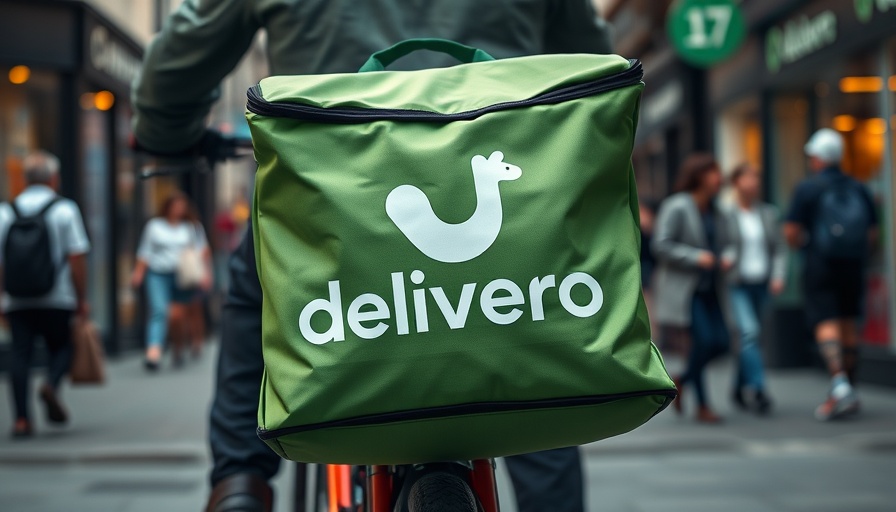
DoorDash Stakes Its Claim in the Food Delivery Market
The potential acquisition of Deliveroo by DoorDash could reshape the food delivery landscape significantly. With a possible cash offer reported at 180 pence per share, equating to approximately $3.6 billion, this dramatic move is strategically timed as DoorDash seeks to expand its operational footprint. This latest turn of events follows previous discussions this past May, which initially fell through due to valuation disagreements. Yet, as the competitive landscape evolves, it seems both companies realize the value of collaboration over competition.
A Common Trend: Consolidation in Digital Delivery Services
DoorDash's endeavor isn't unique. In recent years, consolidation has become a defining trend in the food delivery sector. Major players such as Uber Eats and Grubhub have also engaged in acquisitions and partnerships to enhance their market presence. This trend highlights an essential takeaway for growing businesses: to thrive in a rapidly changing market, you may need to consider alliances that could accentuate your strengths and offer new capabilities.
The Impact of New Verticals on Future Growth
Post-2020, DoorDash saw an opportunity beyond restaurant deliveries, venturing into a variety of retail sectors including groceries, health and beauty products, and even alcohol. This expansion reflects an essential shift in consumer behavior where convenience and speed are paramount. Business owners looking to scale must pay close attention to these evolving consumer preferences as they consider their own strategies.
What This Means for Business Owners in the Food Sector
Should the acquisition move forward, the combined infrastructure and operational synergies of DoorDash and Deliveroo could lead to better efficiencies and lower costs throughout the delivery process. For businesses already in this sector, this acquisition creates a ripple effect that businessmen must contend with, especially when it comes to pricing and customer acquisition. Monitoring these shifts is crucial for any business hoping to maintain a competitive edge.
Future Predictions: What Lies Ahead?
As DoorDash continues to grow its marketplace to include a staggering 94 of the top 100 restaurants in the U.S., the pressure intensifies on other delivery services to innovate and enhance their offerings. Expect enhanced technological integration, as both companies likely combine resources to elevate customer experiences through greater efficiency. Businesses that leverage technology in their operations stand a better chance of flourishing amidst these industry shifts.
Your Next Steps: Engage with Emerging Trends
For business owners navigating these waters, the takeaway is clear: engage with the trends shaping the food delivery and retail sectors. Think strategically about how your services can adapt to meet changing consumer demands, perhaps through technology or partnerships. Evaluate your operational infrastructure; consider opportunities for collaboration that can facilitate growth.
Stay informed about potential changes, and be ready to pivot your strategies according to the wave of acquisitions and expansions in the industry. Embracing innovation and being agile will be essential for success in this dynamic market.
As the DoorDash-Deliveroo talks continue, don't waste time waiting for the outcome. Instead, focus on how you can refine your business model to thrive now. Take action and start planning your next move today!
 Add Row
Add Row  Add
Add 



Write A Comment